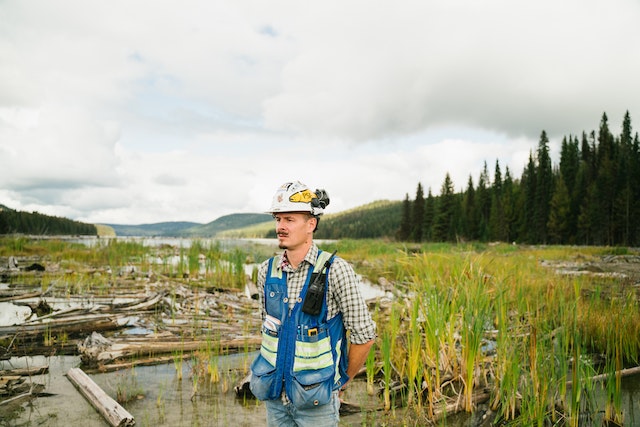What is a CEMP?
A Construction Environmental Management Plan (CEMP) is a document developed for submitting to councils to ensure that construction activities are carried out in an environmentally responsible and sustainable manner. It outlines the measures, practices, and procedures that will be implemented to minimize the environmental impacts of a construction project.
What are the components of a cemp?
Key components of a CEMP typically include:
Environmental Impact Assessment: This section assesses the potential environmental impacts of the construction project, such as soil erosion, habitat disruption, noise, air quality, and water pollution.
Legal and Regulatory Compliance: The plan should detail how the construction project will comply with all relevant environmental laws, regulations, and permits.
Environmental Objectives and Targets: It outlines specific goals and targets for reducing or mitigating environmental impacts during construction.
Risk Assessment: Identifying and assessing potential risks to the environment and outlining strategies to mitigate these risks.
Best Practices and Mitigation Measures: The CEMP includes a set of best practices and mitigation measures to minimize the environmental impact of construction activities. This may involve erosion and sediment control, dust and noise management, waste management, and the protection of sensitive ecosystems.
Monitoring and Reporting: Procedures for monitoring environmental performance during construction and reporting any deviations from the plan or incidents that may occur.
Emergency Response: A plan for responding to environmental emergencies or accidents that may occur during construction, such as spills or habitat damage.
Training and Education: Ensuring that construction personnel are adequately trained and educated on environmental best practices and procedures.
Communication and Stakeholder Engagement: Strategies for engaging with the community, regulatory agencies, and other stakeholders to keep them informed about the project’s environmental efforts and address concerns.
Continual Improvement: A commitment to ongoing assessment and improvement of environmental management practices throughout the construction project.
The purpose of a CEMP is to minimize the negative environmental impacts of construction activities, protect natural resources, and ensure compliance with environmental regulations. It is an essential tool for responsible and sustainable construction projects, helping to balance the need for development with environmental conservation and protection.
when is a construction environmental management plan required?
Construction Environmental Management Plans (CEMP) are required for construction projects in various situations, depending on local regulations, project scale, and environmental sensitivity. Here are some common scenarios when a CEMP may be required:
Legally Mandated: Many UK councils require implementation of a CEMP for construction projects of a certain size or type. Councils aim to ensure that construction activities are carried out in an environmentally responsible manner.
Large-Scale Projects: Construction projects that are substantial in scale, such as infrastructure developments, large buildings, or industrial facilities, often require a CEMP due to the potentially significant environmental impacts associated with their construction.
Sensitive Environmental Areas: If a construction site is located in or near environmentally sensitive areas like wetlands, protected habitats, or areas with endangered species, regulatory authorities may require a CEMP to minimize the impact on these ecosystems. Such as national parks or similar.
Near Water Bodies: Projects situated near rivers, lakes, or coastal areas may need a CEMP to address potential water pollution concerns, erosion control, and protection of aquatic ecosystems.
Public Infrastructure: Public infrastructure projects, such as highways, bridges, or airports, often require a CEMP to address the environmental and social impacts associated with construction and operation.
Renewable Energy Projects: Large-scale renewable energy projects, like wind farms or solar installations, may require a CEMP to mitigate environmental impacts and protect the surrounding environment.
Mining and Quarrying Operations: These activities can have substantial environmental impacts, and regulatory agencies often require comprehensive environmental management plans, which may include aspects of a CEMP.
Specific Permit Requirements: Some construction permits may stipulate the need for a CEMP as a condition for approval.
It’s essential to consult local environmental regulations and engage with relevant regulatory authorities early in the planning process to determine whether a CEMP is required for your specific construction project. Even if not legally mandated, developing a CEMP can be a responsible and beneficial practice to minimize the environmental footprint of any construction activity.
Where can i find if there is a CEMP requirement for my Project?
The first essential step in determining if your construction project needs a Construction Environmental Management Plan (CEMP) is to check the planning decisions and permits issued by your local council for any specific CEMP requirements. These documents often contain crucial information about environmental compliance obligations. Additionally, it’s important to review the relevant environmental regulations and laws at both the local and regional levels. These rules typically outline when a CEMP is necessary, taking into account factors like project size, nature, and environmental sensitivity. Furthermore, for projects located in ecologically significant or potentially impactful areas, collaborating with environmental stakeholders and consulting community groups can provide valuable insights into local prerequisites. By starting this process carefully, you can make sure your construction project aligns with environmental compliance expectations
who prepares construction environmental management plan?
We prepared a short list to include who can prepare CEMP for your project requirements.
- Environmental Consultants
- Environmental Engineers
- Project Managers
- Environmental Regulators
- Stakeholders and Community Groups
- Legal Counsel
- Contractors and Construction Teams
- Liongate (for specialized CEMPs related to Council condition discharges)

CONCLUSION
In summary, a Construction Environmental Management Plan (CEMP) plays a crucial role in safeguarding the environment during construction projects. It’s a practical guide to follow rules and minimize harm to nature.
DO YOU NEED PROFESSIONAL ADVISE?
If you need professional advice for your Construction Environmental Management Plan (CEMP), we suggest getting in touch with Liongate. We specialize in CEMPs and can provide expert guidance to fit your needs. Our team of consultants is experienced in environmental planning and following the rules. Feel free to contact us for full support in making sure your project follows all the environmental rules.
